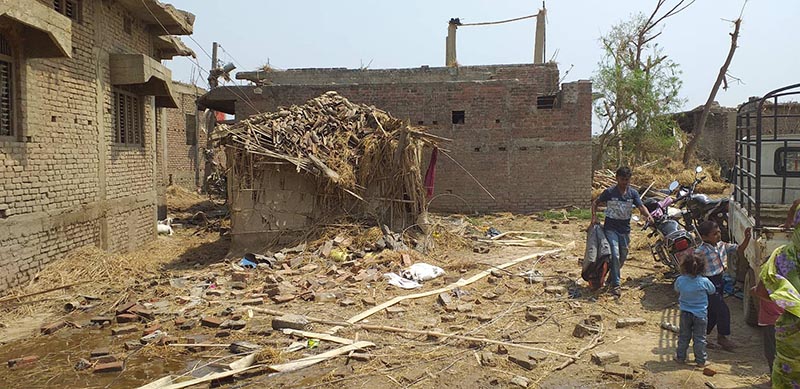'Localised weather forecasting tough given the available technology'
KATHMANDU: After a massive rainstorm ravaged areas in Bara and Parsa districts, on Sunday, a question has been raised whether winds of such magnitude could have been forecasted and precautions taken to prevent casualties.
As per recent updates, total number of casualties reported in Bara and Parsa has reached 29 while over 600 people have been reported injured.
Massive winds, accompanied by hailstorms and rain, struck Bara and the adjoining district of Parsa late on Sunday evening. People were either buried under rubbles of houses or crushed by electric pylons and trees that were uprooted as the disaster advanced.
Seeking answer to the aforementioned question, THT Online approached the Meteorological Forecasting Division of the Department of Hydrology and Meteorology.
"Forecasting weather on a local scale, focused on particular locations in the country is a tough task given the available technology," said senior divisional meteorologist at the Division, Sujan Subedi.
Subedi explained, they can forecast the possibility of rain and change in weather conditions, but it is still difficult to get localised and specific weather forecasts, that too of such a devastating nature.
People, on social media, reacted to the natural disaster and questioned why early warnings were not issued by the Department of Meteorology. Had such been issued, the number of casualties and extent of damage could have been controlled.
Meanwhile, it has been learnt that the Indian Department of Meteorology had issued a warning, for Monday as well, against powerful winds in West Bengal and Bihar that border Nepal.






